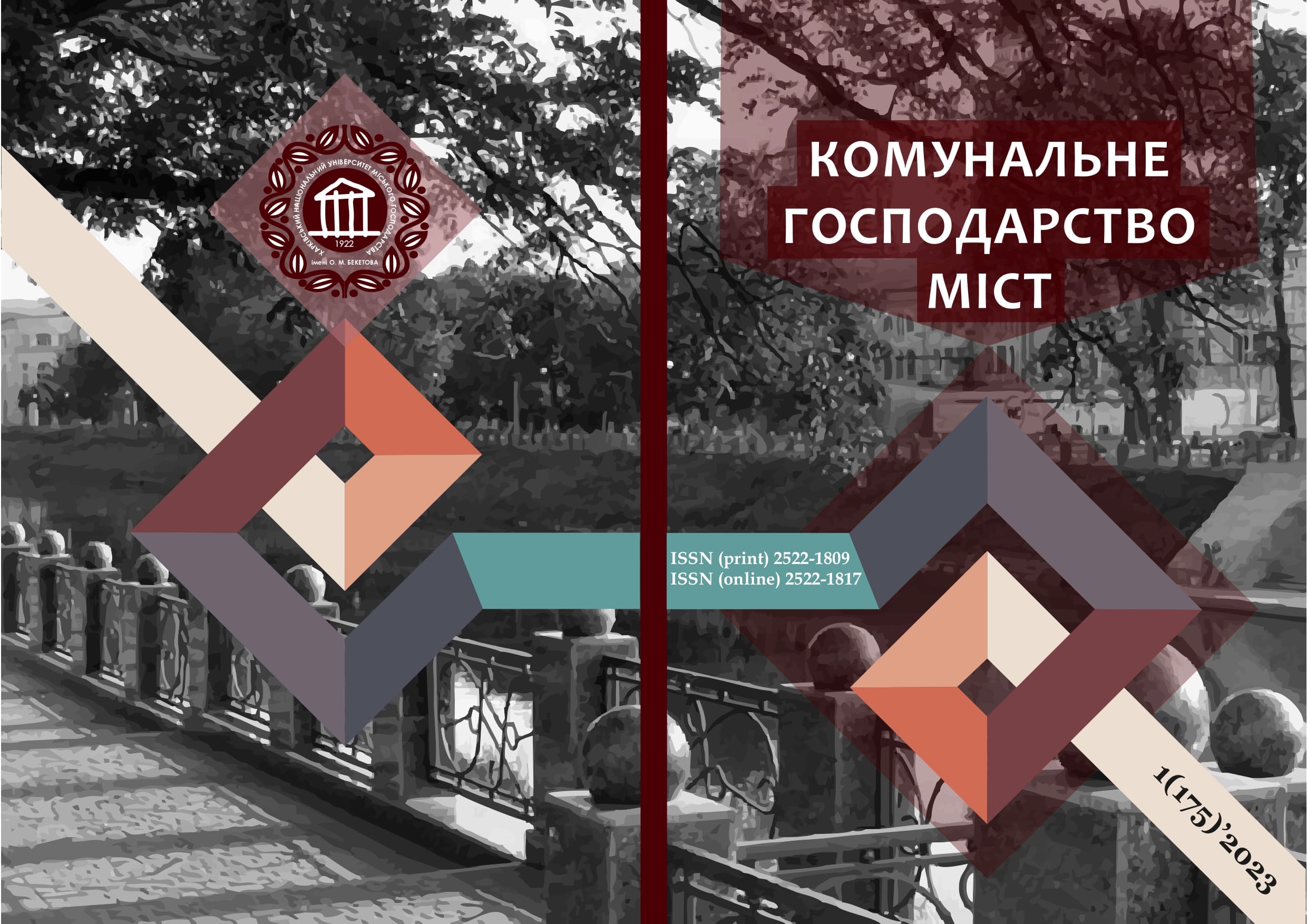ENERGY SAVING THROUGH IMPROVED TOPOLOGY OF THE CITY WATER NETWORK
DOI:
https://doi.org/10.33042/2522-1809-2023-1-175-99-104Keywords:
water supply system, giving-distributive complex, water network, topology, energy savingAbstract
This article compares the operation of the existing water supply system in the city Kremenchuk, Poltava region, namely the giving-distributive complex (GDC), which includes the main water network and the pumping station of the 2-nd lift, with the GDC, in which the topological structure has been improved by introducing a new section of the network. During the operation of the GDC, the tasks of repairing or replacing pipes of individual sections the water network constantly arise. At the same time, attention should also be paid to the topological structure of the water network during its reconstruction. The need to improve the topological structure is clearly seen after performing hydraulic calculations and building piezometric maps. For comparison, piezometric maps need to build before and after the reconstruction of the water network. At the nodal points of the network, a geodetic mark, free pressure and piezometric mark are shown. Considering that water moves from a larger piezometric mark to a smaller one, the directions of water movement and water network nodes with minimal free pressures are determined. At the same time, flaws in the topological structure are found on the piezomap, which should be eliminated in order to increase its dependebility. It is known that dependebility includes 3 components: reliability, maintainability and durability. Durability is ensured by the choice of pipe material during design. If we take into account simultaneously reliability and maintainability, then a complex indicator should be used, namely, the availability factor Ka. It estimates the probability that at any given time the section of water network is in working condition. According to the topological structure, the water network of the city should be looped and have more connections between nodes. But in practice, this principle can not always be maintained, given the planning structure of the streets the city. Graphical representation of hydraulic calculations using piezomaps allows you to identify overloaded sections of the water network and increase its dependebility. When improving the topological structure, it is necessary to use the prof. Novokhatniy principle, namely, new sections must be introduced so that they unite the existing nodes of the existing water network. Hydraulic calculations have shown that by improving the topological structure of the water network the city Kremenchuk, the annual energy saving is about 452 thousand kWh, which corresponds to a saving of about UAH 2.7 million per year (at the cost of electricity 6 UAH per 1 kWh).
References
Belozorov N.P., Luhovskoy M.V. (1973) Raschet system vodosnabzhenyya s prymenenyem vyichislitelnoy tekhnyky. M.:Kolos, 248 р.
Belan A.E., Khoruzhyy P.D. (1981) Proektyrovanye y raschët ustroystv vodosnabzhenyya. K.: Budivelʹnyk, 192 р.
Khoruzhyy P.D., Tkachuk O.A. (1993) Vodoprovidni systemy i sporudy. K.:Vyshcha shkola, 262 р.
Ukrayinetsʹ M.O. (2002) Vodoprovidni merezhi (teoriya i proektuvannya). Zaporizhzhya: ZDIA, 186 р.
Novokhatniy V.G. (2012) Reliability of functioning the giving-distributive complex water-supply systems (Doctoral dissertation). Available from National Library of Ukraine named of V.I. Vernadsky. (DC 131058).
Matyash O.V. (2012) Evaluation of reliability and improvement of calculations of the water with the networks of the ramified type systems: Dis. cand. tehn. Science: 05.23.04/ Poltava: PoltNTU, 225 р.
Khomutetska T.P. (2016) Energy saving water supply. K.: Agricultural Science. 304 p.
Novokhatniy V., Kostenko S., Matyash O. (2019). Reliability of small settlements water supply. Poltava: PNTU. 103 p.
Tkachuk O.A., Shevchuk A.Y. (2019) Determination of indicators functional reliability water supply facilities. Scientific Bulletin of Construction. v. 97. № 3. pp. 126-134.
Khomutetsʹka T.P. (2020) Rozvytok naukovykh i praktychnykh zasad enerhooshchadzhenoho vodopostachannya z pidzemnykh dzherel : dys. dokt. tekhn. nauk: 05.23.04/ K.: KNUBA, 389 р.
Matyash A., Usenko I., Myagkohlib R., Kostenko S. (2017) Estimation of reliability of metal water. Eastern-European Journal of Enterprise Technologies, 3/1 (87), 35-42 p. doi:10.15587/1729-4061.2017.101262.
Szpak D., Tchorzewska-Cieslak B. (2014) Assessment of the failure rate of water supply system in terms of safety of critical infrastructure. Chemik, Vol. 68, Issue 10. pp. 865-867.
Mays L. (2018) Water transmission and distribution. AWWA, Denver: US. 62 p.
Downloads
Published
How to Cite
Issue
Section
License
The authors who publish in this collection agree with the following terms:
• The authors reserve the right to authorship of their work and give the magazine the right to first publish this work under the terms of license CC BY-NC-ND 4.0 (with the Designation of Authorship - Non-Commercial - Without Derivatives 4.0 International), which allows others to freely distribute the published work with a mandatory reference to the authors of the original work and the first publication of the work in this magazine.
• Authors have the right to make independent extra-exclusive work agreements in the form in which they were published by this magazine (for example, posting work in an electronic repository of an institution or publishing as part of a monograph), provided that the link to the first publication of the work in this journal is maintained. .
• Journal policy allows and encourages the publication of manuscripts on the Internet (for example, in institutions' repositories or on personal websites), both before the publication of this manuscript and during its editorial work, as it contributes to the emergence of productive scientific discussion and positively affects the efficiency and dynamics of the citation of the published work (see The Effect of Open Access).

